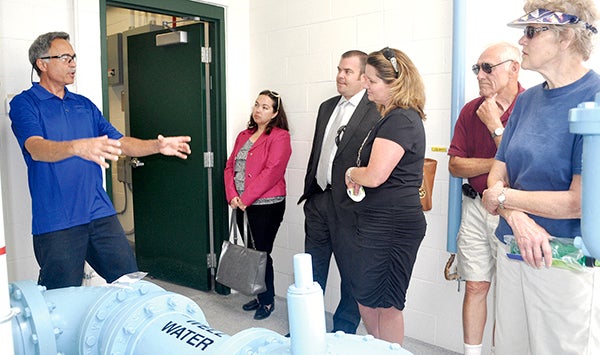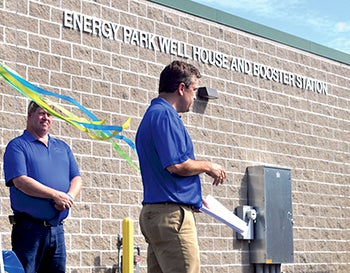All’s well that ends well: Austin Utilities showcases latest well and reservoir
Published 10:36 am Wednesday, August 27, 2014

Pete Jacobsen, lead water chemical technician for Austin Utilities, explains how water shoots up a well pipe during the Austin Utilities Energy Park Well and Reservoir open house Tuesday. — Photos by Trey Mewes/trey.mewes@austindailyherald.com
About 1,500 gallons per minute. Up to 2.2 million gallons per day. That’s the amount of water Austin’s newest well produces.
Austin Utilities celebrated the eighth well in Austin Tuesday afternoon with a ribbon cutting and open house at the Energy Park well and reservoir. The new well, at about 960 feet deep, will help the city of Austin’s ongoing water needs for the next several decades.
“We don’t do this every day,” General Manager Mark Nibaur said.
According to Nibaur, Austin’s last well was built in 1976. Utilities officials estimate the well will be around for more than 50 years.

Austin Utilities Board President Geoff Baker thanks utilities staff for helping with the newest well and reservoir.
The well itself took about three months to drill at the beginning of 2012, while the reservoir and well house were built from the summer of 2012 through August 2013. The project cost about $3.5 million.
Hormel Foods Corp. representatives said in 2012 that the new reservoir will allow Hormel’s Austin plant to rely on Austin Utilities for the bulk of its water supply while it performs maintenance on its own water system.
The well will also serve the city of Austin, which uses about 7.3 million gallons of water per day on average. Utilities staff say Austin has used as much as 8.5 million gallons per day this year and could exceed 11 million if there was extended hot and/or dry weather.





